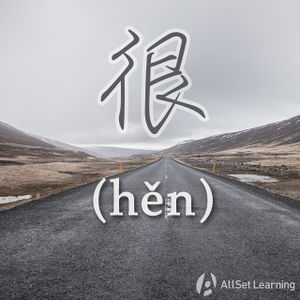Difference between revisions of "Simple "noun + adjective" sentences"
| Line 37: | Line 37: | ||
<ul> | <ul> | ||
<li class="x">他 <strong>是</strong> 高 。<span class="pinyin">Tā <strong>shì</strong> gāo.</span></li> | <li class="x">他 <strong>是</strong> 高 。<span class="pinyin">Tā <strong>shì</strong> gāo.</span></li> | ||
| − | <li class="o">他 < | + | <li class="o">他 <em>很</em> 高 。 <span class="pinyin">Tā <em>hěn</em> gāo.</span> <span class="trans">He is tall.</span> |
</li> | </li> | ||
</ul> | </ul> | ||
Revision as of 09:10, 5 December 2016
-
Level
-
Similar to
- Age with "sui" (A1)
- Connecting nouns with "shi" (A1)
- The "also" adverb "ye" (A1)
- Expressing "both A and B" with "you" (A2)
- Special verbs with "hen" (A2)
- Superlative "zui" (A2)
- Adjectives with "name" and "zheme" (B1)
- Reduplication of adjectives (B1)
- Adjectival complement "de hen" (B2)
- Emphasizing with "henshi" (C1)
-
Used for
-
Keywords
In English, nouns can be "linked" to adjectives and other nouns with the verb to be. In Chinese, nouns are linked to other nouns in one way, but linked to adjectives in a completely different way. Nouns are linked to other nouns with 是 (shì). Nouns are linked to adjectives with 很 (hěn).
Contents
Structure
Noun + 很 + Adj.
The noun in this structure is the subject of the sentence. Sometimes the 很 (hěn) in this structure is translated as "very", but often it is just a way to link a noun to an adjective.
Examples
In the following examples, 很 (hěn) is just a link (you could think of it as a substitute for the verb "to be"), and the sentences could be translated as "(Noun) is (adjective)".
- 我 很 好。 I'm good.
- 你 很 漂亮。 You are pretty.
- 他 很 高兴。 He is happy.
- 中文 很 难 。 Chinese is difficult.
- 老板 很 生气。 The boss is angry.
- 猪 很 聪明 。 Pigs are smart.
- 我 哥哥 也 很 高。 My older brother is also tall.
- 你 家 也 很 远 吗? Is your house also far away?
- 爸爸 很 忙,妈妈 也 很 忙。 Dad is busy, and mom is also busy.
- 他 和 他 弟弟 都 很 帅。 He and his younger brother are both handsome.
Remember that 是 (shì) is not used to link adjectives to nouns. This is a classic mistake that almost everyone makes when learning Chinese. Make sure you use 很 (hěn) and not 是 (shì) to link adjectives to nouns, as shown below:
- 他 是 高 。
- 他 很 高 。 He is tall.
很 (hěn), what's your problem?!
If you're like most learners, when you first learn this pattern, you're thinking, "how can 很 (hěn) mean "very" one minute, but then nothing but a "link" the next? How do I know if anything means anything in this language?" That's a reasonable response. But in the case of these "Noun + Adj." sentences, you just have to think of this usage of 很 (hěn) as an exception. It's just part of the structure.
If you actually want to add the meaning of "very" into the sentence, you could use another adverb instead of 很 (hěn). One good choice is 非常 (fēicháng).
- 他 很 高 。 He is tall.
- 他 非常 高 。He is very tall.
See also
Sources and further reading
Videos
- Yoyo Chinese: "To be" + Adjectives
Books
- Basic Patterns of Chinese Grammar (pp. 56-8) →buy
- Chinese: An Essential Grammar, Second Edition (pp. 44-5) →buy
- Integrated Chinese: Level 1, Part 1 (3rd ed) (pp. 126-8) →buy
- New Practical Chinese Reader 1 (新实用汉语课本1) (pp. 20-1, 143) →buy
- New Practical Chinese Reader 1 (新实用汉语课本1)(2nd ed) (pp. 23, 166, 249) →buy
- 40 Lessons for Basic Chinese Course (基础汉语40课上册) (p. 86)→buy



